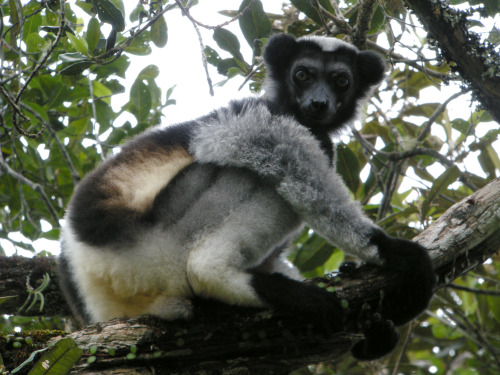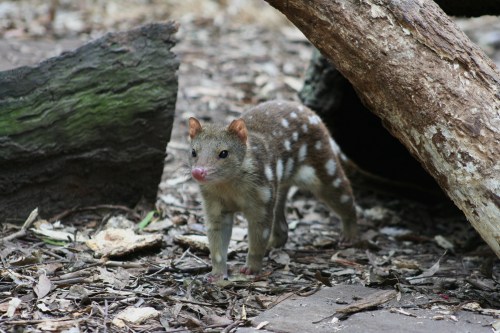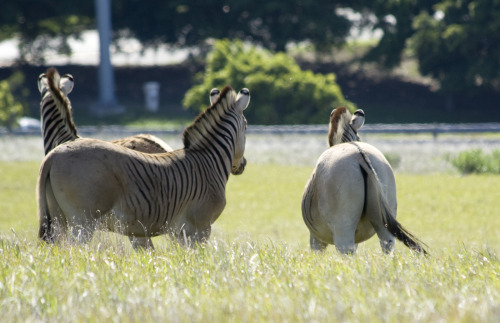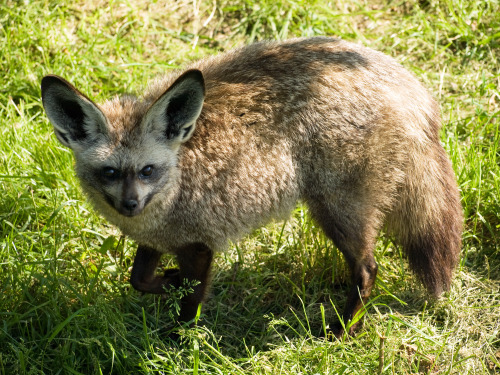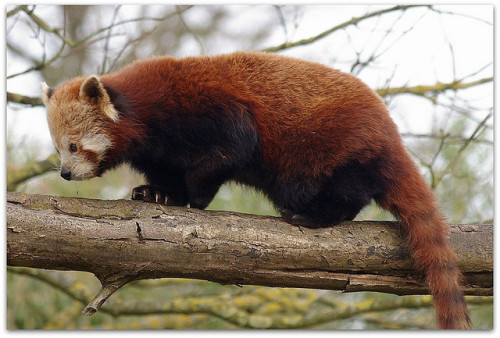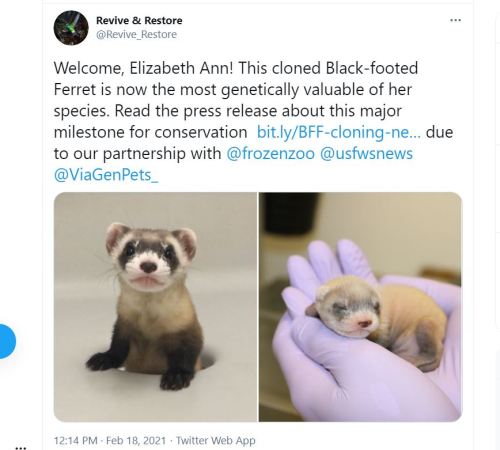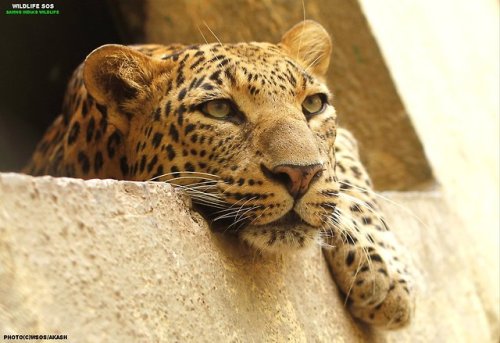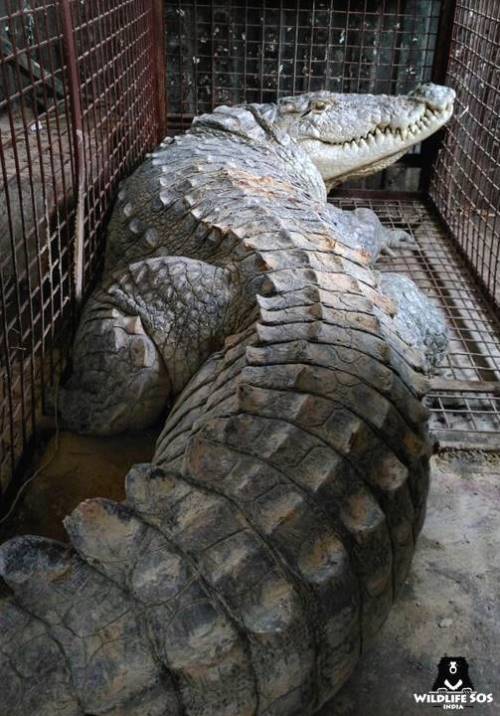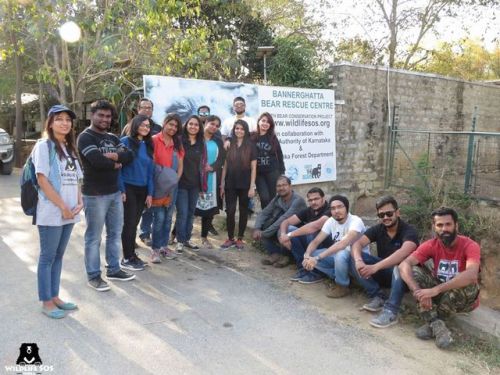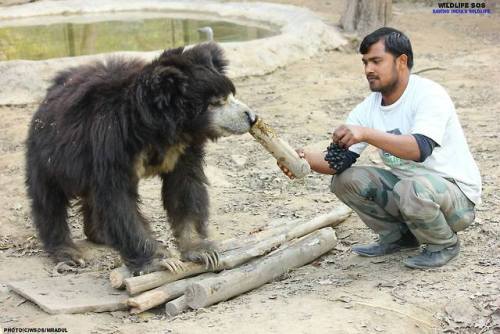#conservation
Indri
The Indri is one of the largest living lemurs. Like all lemurs, the indri is native to Madagascar. These primates live in small groups of mated pairs. The groups are very vocal and often communicate with other groups by singing and roaring.
The indri has a mating partner for life unless one of the partners dies. If one partner dies, the other will go off to find a new mate. Although they live in groups, they sleep alone or with their pair in trees.
Indris are herbivorous and primarily folivorous, meaning they eat only leaves. Female indris prefer premature leaves, and have seniority over their food source. Because of this, they feed higher up in the trees.
This species is critically endangered. They only inhabit Madagascar, and their primary threat is deforestation. They are also hunted as their meat is a delicacy in some regions. Conservation efforts to hold them in zoos has, unfortunately, failed. Only one indri has lived over a year in a zoo, and reproduction efforts have never been a success.
Photo by: Frank Vassen via Flickr
Post link
Malayan Tapir
The Malayan tapir is the only tapir to inhabit Asia out of the five other tapir species. It is also the biggest out of the five, with and average weight between 250 and 320 kg (550 and 710 lb). The female tapir is usually larger than the male.
Malayan Tapirs rely on their excellent hearing ability due to their poor eye sight. This makes it extremely difficult for them to search for food and avoid predators. However, despite its bulky body, they can run very fast.
These animals are very independent and dominant large areas of lands for themselves by urinating on surrounding plants. They choose their habitats near water where they bathe. Malayan tapirs are herbivorous and eats exclusively shoots and leaves.
The Malayan tapir used to inhabit areas all around Asian rein forests, however, they are now endangered toward extinction. This is due to mostly deforestation, but they are also being used for illegal trade and are hunted for sport.
Image by: Andy Hay via Flickr
Post link
10 Reasons Why Orca Whales Should NOT be at Seaworld (Or Any Marine Park)
- In the wild, orcas swim up to 100 miles a day. They are confined into a small tank in captivity.
- Their collapsed dorsal fins (pictured above) are a sign of an unhealthy whale. All male orcas in captivity have a collapsed dorsal fin. Less than 1% of orcas have this condition in the wild.
- Orcas do not live up to their nickname “killer whale”. There has not been one incident of an orca killing a human in the wild. However, in captivity, orcas have killed 3 humans and injured 151 reported injury incidences.
- On average, orcas live up to 50 years old in the wild. Some females have been reported to live 80-100 years old. Seaworld’s average orca life span is 13 years old.
- Family is important to orcas. In the wild, their pods include generations upon generations of their family. Marine parks do not keep their families together. In fact, babies are taken from their mothers. This is psychologically traumatizing to the whales.
- Whale fights are common in the tanks because they are not in their pods and they are, literally, mentally ill. In a tank, whales can’t flee from fights like they can in the wild. These whales get brutally injured and sometimes killed by other whales in the tank.
- Pods have their own languages. In a tank with other whales who have different languages. Imagine living with somebody who speaks a different language with you and you cannot use hand motions. Frustrating right?
- Not only are the tanks in marine parks WAY too small for this wild animal, in the wild, marine mammals live in a habitat full of MANY other marine plants and animals. In captivity, they live in a cement, chlorinated tank.
- Since 1961, 141 whales have been captured. 125 of these whales have died.
- The brain of an orca is 4 times larger than the human brain. It has been confirmed their intelligence matches to ours, if not more.
Just imagine living in cement room with a few other people who don’t speak your language. Imagine not knowing if you will ever see your family again. Imagine being forced to do performances for others and being fed one thing for the rest of your life. Imagine being confined in a cement room when there is a whole world out there to explore.
So, how can you help? It’s easy! boycott sea world. Without the revenue, they are forced to shut down their business. Also, education is important. Remind the public of what is going on.
Post link
Quoll Returns to the Australian Mainland After 50 Years
On March 1st, Fourteen eastern quolls were released into Australia’s mainland to rebuild their population because of a team’s effort from Australian National University. Since the 1770′s, quoll numbers have been declining due to many dangers such as habitat loss and predators that include foxes, wild dogs, and cats.
The quoll is carnivorous and feeds on smaller mammals, small birds, lizards, and insects. Until now, it has inhabited inland parts of Australia. There are six current species(pictured is the tiger quoll). The larger of which live longer than the smaller, with an average life span of two to five years.
So, whats the point of this translocation? Well, quolls are important to the functioning of the mainland ecosystem where they regulate the prey species. The released quolls will have radio tracking collars to be monitored.
Fact about the quoll: Male and female quolls only meet for mating, and male den territories often overlap female territories. However, they have communal toilets where they may have up to 100 droppings in them.
Photo by: joshua cunningham via Flickr
Post link
The Quagga is Back After 100 Years Of Extinction
What is a quagga?
The quagga is an African subspecies of the zebra that went extinct over 100 years ago due to settlers killing them off in the 1880′s. They share the striped characteristic with their cousin that fades off toward the middle of their body. There is not very much validation on the behavior of the quagga.
Is the quagga really back?
Well, yes and no. The Quagga Project was started in 1987 by Reinhold Rau in a town outside of Cape Town, South Africa to bring back the quagga through genetic engineering and selective breeding. Because the quagga is a subspecies of the zebra, they can use zebra DNA toward the selective breeding process. There has been a success in the process, however, the original quagga and what they are calling the “Rau quagga” are not genetically the same. Though they may have the same genetic characteristics, it is not the same animal.
Whether or not the animal is really back, there is a new species on our planet, and that is pretty cool.
Post link
Bat-Eared Fox
Named for it’s large ears, the bat-eared fox is a canid species that inhabits open plains of Africa where termites and other bugs are found. Interestingly, termites make up 80% of the fox’s diet. This makes them insectivorous. A single fox can eat up to 1.15 million termites a year. Also, because of their insect diet, they have unusual teeth are much smaller than other canids.
The bat-eared fox is very social. They live in groups that can have up to fifteen foxes. Mothers will birth 1-6 kits. Parental roles switch with the bat-eared fox. After the kits are birthed, the male will take over and groom, carry, and defend it’s kits.
The bat-eared fox is not endangered, and not even threatened, really. However, as human population grows, settlements have slowly taken their territory. They have also, rarely, been known to be hunted for their fur.
Photo by: Shaun Dunphy via Flickr
Post link
Shout out to Taylor Swift who’s decided to send 100% of proceeds made from her new music video “Wildest Dreams” to wildlife conservation!
Olinguito
The olinguito is a part of the raccoon family and was discovered in 2013 by the Smithsonian National Museum of Natural History. This interesting creature inhabits parts of South Africa within the Andes Mountains.
The olinguito eats mostly fruits making it omnivorous. However, they sometimes feed on insects and nectar.
These furry little guys share it’s genus with five other species called Bassaricyon. All of the species within this genus live in the Andes however, the olinguito lives the highest in elevation. Being 5,000 to 9,000 ft.
Currently, the olinguito in not threatened. However due to deforestation and urbanization, these creatures are near threatened. No efforts that are known of are being put into reducing habitat destruction.
Photo by: rarecollection.ch via Flickr
Post link
Happy World Elephant Day!
To help the conservation of elephants, visit these sites. Born Free,Save the Elephants,Space for Giants, and Tsavo Trust.For some quick, awesome facts visit here.
Elephant poaching has gotten out of hand because of the demand for their ivory tusks. The elephant is so ancient and majestic and what is happening to the species is heartbreaking. I believe if people knew more about these amazing creatures, people would, maybe, think twice about what they’re doing.
The elephant is the biggest land mammal on earth. Their massive size also carries a massive brain making them one of the most intelligent mammals on earth and have amazing learning abilities. Their brain also has a more complex and bigger hippo campus than any other mammal. This section of the brain is responsible for emotion. Yup, this means the elephant has more feelings and emotions than even us humans do.
When baby elephants are young, they can be blind for a short time. During this time, they have been seen to suck their trunks for comfort as like human babies do with their thumbs.
Female elephants have tight bonds and don’t leave their groups for life unless one dies or is captured by humans. Males, however, are more solitary and move between different herds. Elephants are very social. They are always touching one another, communicating in certain fashions, and intertwining trunks.
Elephants show much respect. They grieve for their loved ones who have died and even if an elephant passes another elephant they didn’t know who has passed, they still pay respect. There have also been reports of elephants burying dead humans.
The elephant’s only predator is human. However, lions will prey on elephants if they’re hungry enough.
The elephant is such an amazing, intelligent creature. These animals have rights.Saving them starts with you, so please, speak up.
Photo by: Oliver via Flickr
Post link
Red Panda
The red panda is the only of its genus. It is related to the common Giant panda, however, very distantly. The red panda is more closely related to the genus, Musteloidea, but because of its many differences, it belongs in its own family called, Ailurus.
The red panda, like the giant panda, eats bamboo. However, with the red panda being a omnivorous, it also eats insects, eggs, and small mammals. The red panda also differs from the giant panda in size where it is about the size of a house cat.
These animals are not only solitary within their species, they also have a very independent personality and behavior. Red pandas rarely interact with each other red pandas with the exception of mating season.
These solitary little guys spend most of their time in tree tops within Central Asia and the Himalayan mountains. Their 18 inch tails wrap around their bodies to keep warm in the cold temperature.
With deforestation being the animal’s biggest threat, only about 10,000 of them are left in the wild. In china the panda’s biggest threat is hunting and poaching because of the high demand for the fur on their tails.
To find out how you can help by donating or adopting a red panda visit here.
Photo by: Molly via Flickr.
Post link
“Elizabeth Ann is the first cloned black-footed ferret and first-ever cloned U.S. endangered species. She was created from the frozen cells of “Willa,” a black-footed ferret that lived more than 30 years ago.“
So, why is this a big deal? Because, "All living black-footed ferrets are descended from 7 individuals, resulting in unique genetic challenges to recovering the species.” Willa died 30 yrs ago, but she wasn’t one of the 7. Her genome represents an important revival of genetic diversity.Source:Revive & Restore
Post link
In a daring rescue operation, Team #WildlifeSOS & the UP Forest Dept successfully rescued an 11 foot long #MuggerCrocodile from a village in Shahjahanpur, Uttar Pradesh. The crocodile had come in conflict with the villagers after attacking a local resident & has been relocated & released into the Ganga River.
Read more about the rescue in this coverage by Business Standard here: https://bit.ly/2JAUFLo
Post link
Its trivia time!
This month marks the three year anniversary of Peanut’s rescue from the cruel life of a circus elephant. Do you know what her name was before she was rescued by Wildlife SOS?
Test your knowledge at https://wildlifesos-peanut.questionpro.com/
Post link
There’s a lot that goes into making the huge quantities of porridge that feeds our rescued #SlothBears twice a day, everyday!
Learn what ingredients are used to make this standard meal in this video and sponsor a bowl of healthy, nutritious porridge here: https://bit.ly/2qj6xsJ
Dell has recently partnered with #WildlifeSOS to organize employee engagement activities at our #BannerghattaBearRescueCenter and is also contributing towards the feeding of the bears as part of their CSR (Corporate Social Responsibly) initiative. Recently a group of employees from DELL-Bangalore extended their support and lend a hand to our rescued sloth bears by volunteering at our center in Bangalore, Karnataka.
Read more about their visit by following this link: https://bit.ly/2Ha6muw
Post link
After eleven years in our care, we lost our beloved#SlothBear, Nishant and while we are deeply saddened by his demise, we applaud his strength and perseverance and take solace in knowing that he was able to live a good and happy life at the #AgraBearRescueFacility, a place where he was loved and cherished by both his bear and human companions.
Follow the link to read how he touched our lives: https://bit.ly/2GIjF1N
Post link


